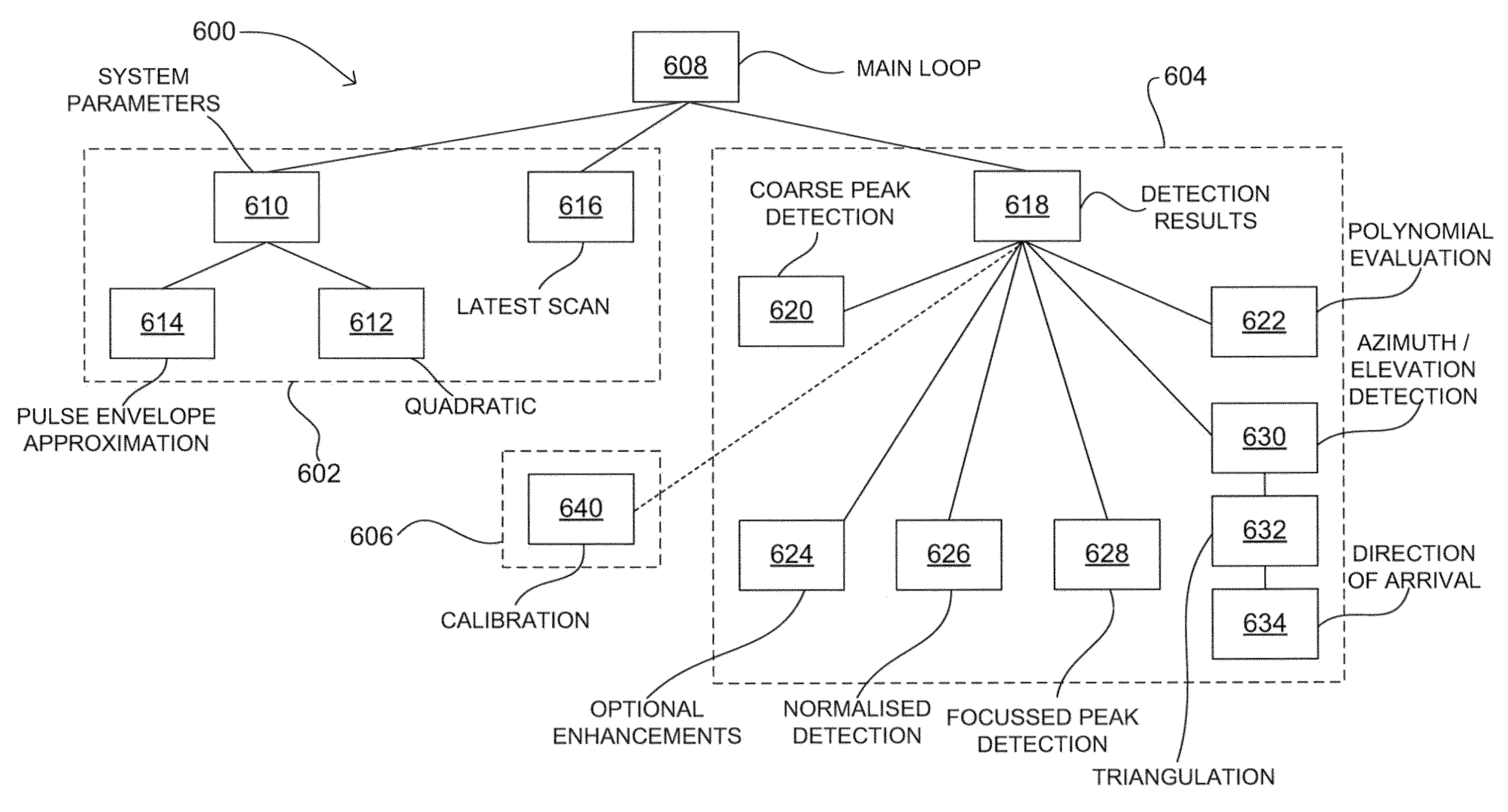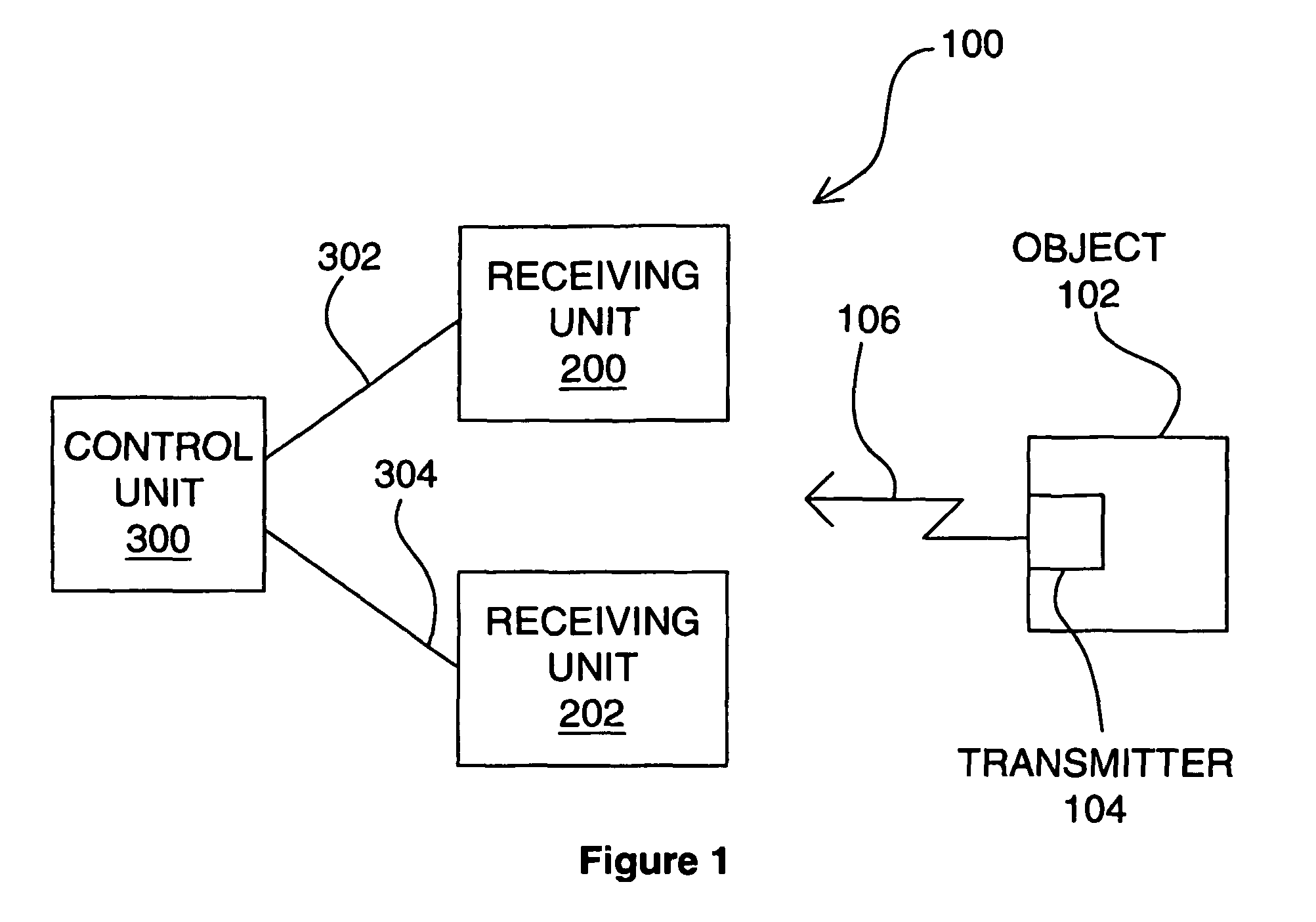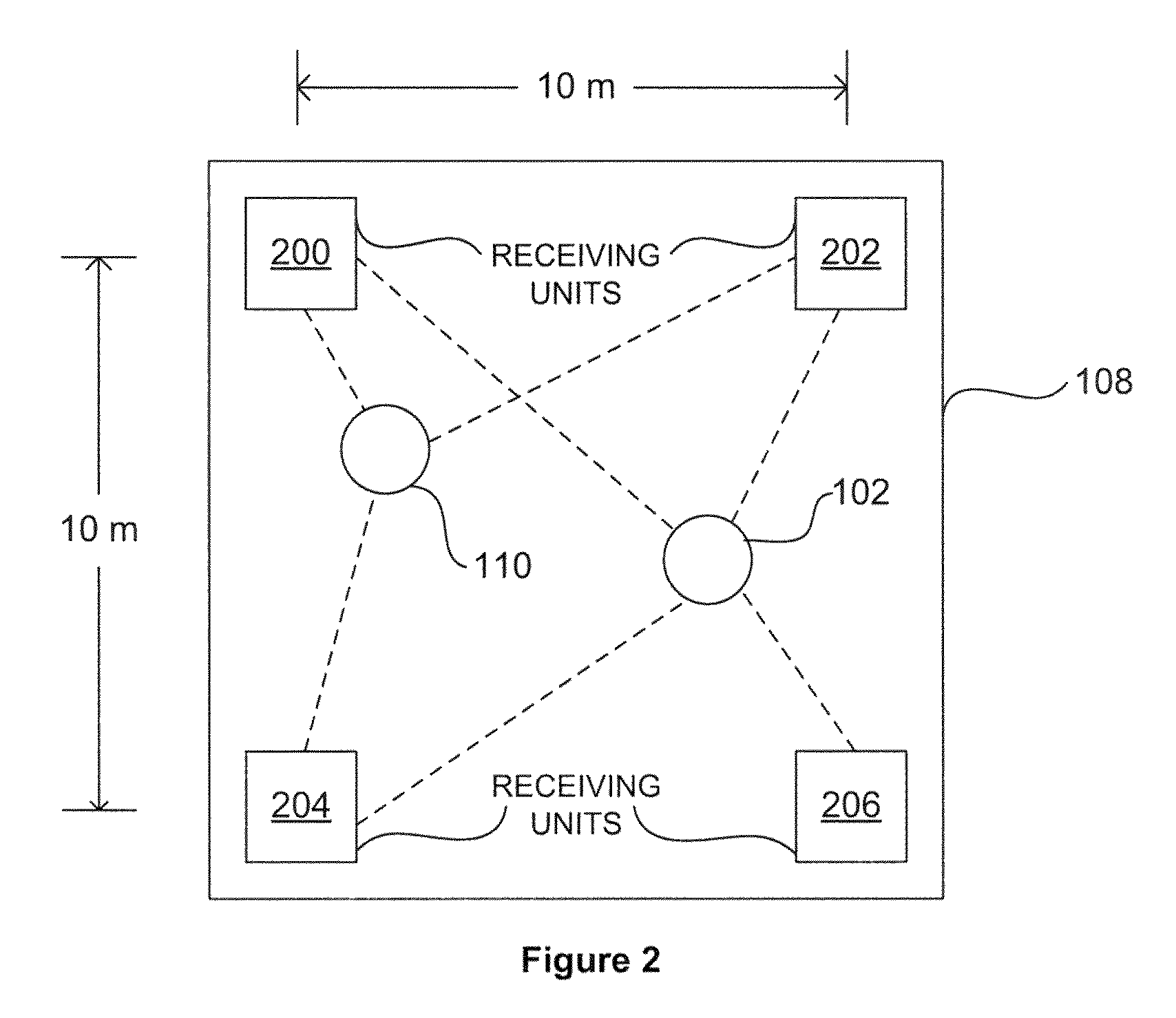Determining positional information
a position information and apparatus technology, applied in direction finders using radio waves, using reradiation, radio wave reradiation/reflection, etc., can solve the problems of limiting the system accuracy, the need to precisely synchronise each receiver and the computer, and the failure of the position estimation procedure. to achieve the effect of reducing the data rate of the messag
- Summary
- Abstract
- Description
- Claims
- Application Information
AI Technical Summary
Benefits of technology
Problems solved by technology
Method used
Image
Examples
first embodiment
[0246]FIG. 1 is an overview of the positioning system. With reference to FIG. 1, the positioning system 100 comprises an object to be located 102, a transmitter 104 associated with or contained in the object 102 and outputting a signal 106, a pair of receiving apparatuses 200, 202, and a control unit 300. The receiving apparatuses 200, 202 are connected to the control unit 300 by data links 302, 304. As discussed in more detail later variants of the system may be operated in passive mode, in which the transmitter is located remote from the object, and the signals received at the receivers are reflections from the object of transmitted signals.
[0247]The receiving units 200, 202 pass to the control unit 300 via the links 302, 304 data representative of the signal 106 received at the receiving units. The control unit then processes the data received from the receiving units so as to determine the angular position of the object with respect to each receiving unit. The angular position i...
second embodiment
[0254]FIG. 4 is a schematic of the positioning system, in which the receiving units and the control unit are interconnected in an alternative configuration. In FIG. 4, a first receiving unit 200 serves as a communications hub between the further receiving units 202, 204, 206 and the control unit 300. The data links 310, 312, 314 between the first 200 and further receiving units 202, 204, 206 and the data link 302 between the first receiving unit 200 and the control unit 300 may as before be electrical wires, radio links or otherwise.
third embodiment
[0255]FIG. 5 is a schematic of the positioning system. In FIG. 5, a control unit 300 is located within a first receiving unit 200, which receiving unit 200 is connected to the further receiving units 202, 204, 206 via data links 310, 312, 314 as before.
[0256]The operation of the control unit and receiving units will be described further later. First, the active object 102 will be described in more detail, with reference to FIGS. 6 and 7.
Description of the Active Object
[0257]FIG. 6 is an overview of an active object in the positioning system. In FIG. 6, the object 102 comprises a transmitter unit 104 coupled to a signal generation unit 120, which units together produce the signal 106.
[0258]FIG. 7 is a schematic showing the object of FIG. 6 in more detail. With reference to FIG. 7, the transmitter unit (or ‘tag’) 104 comprises a single antenna 118, and the signal generation unit 120 comprises a crystal oscillator 122, phase-locked loop (PLL) circuitry 124, a pulse repetition frequency...
PUM
 Login to View More
Login to View More Abstract
Description
Claims
Application Information
 Login to View More
Login to View More - R&D
- Intellectual Property
- Life Sciences
- Materials
- Tech Scout
- Unparalleled Data Quality
- Higher Quality Content
- 60% Fewer Hallucinations
Browse by: Latest US Patents, China's latest patents, Technical Efficacy Thesaurus, Application Domain, Technology Topic, Popular Technical Reports.
© 2025 PatSnap. All rights reserved.Legal|Privacy policy|Modern Slavery Act Transparency Statement|Sitemap|About US| Contact US: help@patsnap.com



